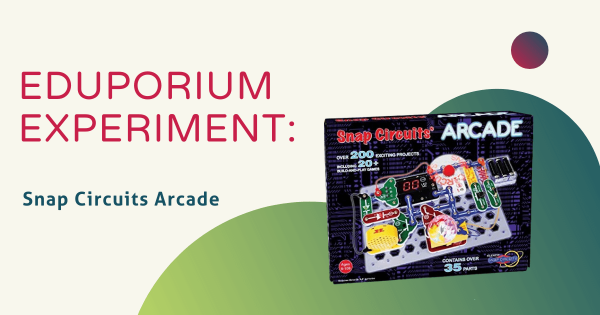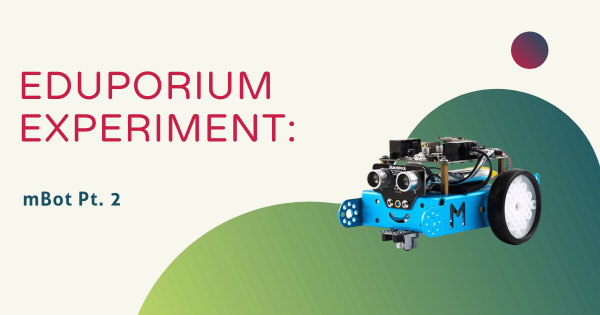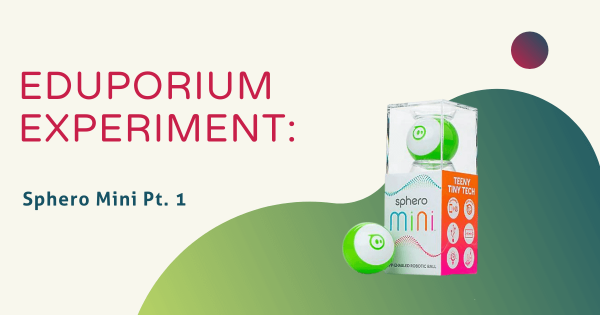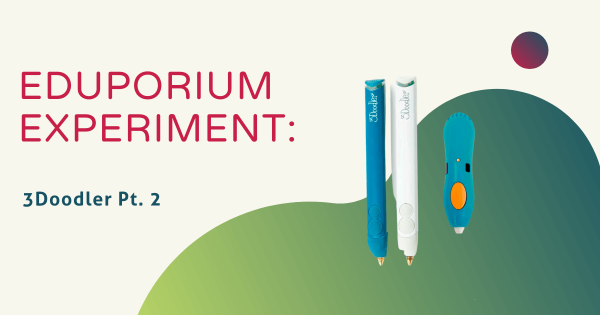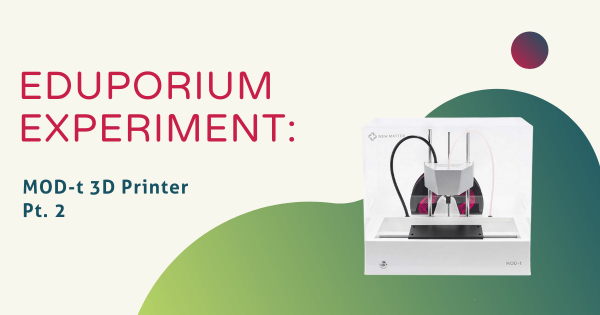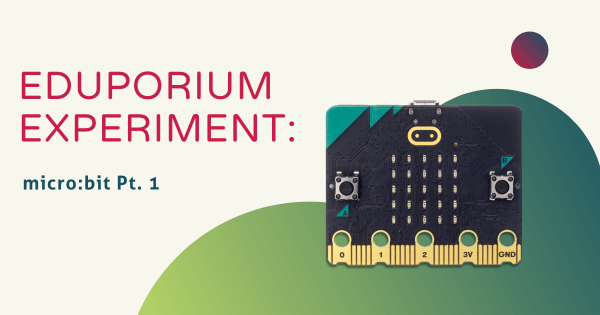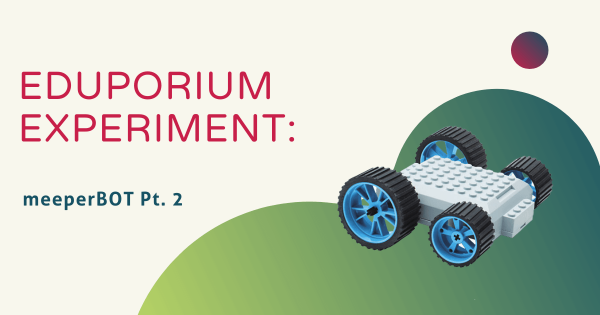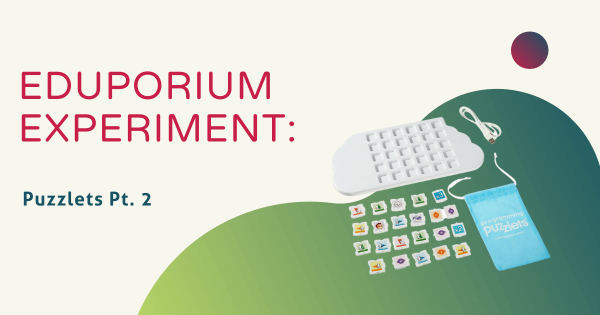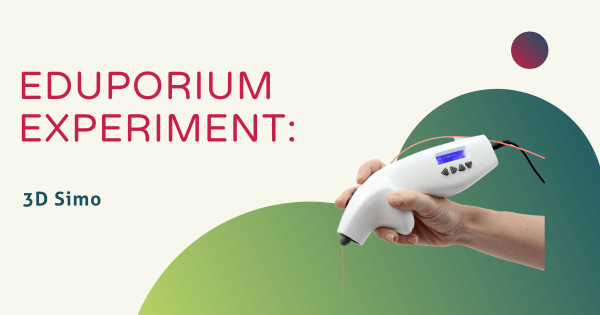The Meccano Meccanoid G15KS is a personal robot kids can build from the ground up. With three ways to program, voice recognition, and smart device communication, the Meccanoid might just become their best robot friend ever! Once built, it towers at almost four feet tall (122 cm) and it comes with 1,014 parts, two hand tools, a battery, and more.
Eduporium Experiment
Our Eduporium Experiment series is one of our longest running blogs. Whenever we add new STEAM solutions to our store, we try it out so we can learn all about it. Over the years, we've covered dozens of top STEAM teaching tools, offering our first-hand insights and tidbits for educators. We believe this content gives K–12 teachers valuable information when it comes to using various STEAM solutions with their students. Our team analyzes products from different points of view and even considers implementation strategies in different educational environments. Whether it's most useful in the makerspace, library, or in the general classroom, we're happy to continue providing these helpful guides. You'll even find classroom-ready STEAM projects to try with your students. Browse through the posts or use the search bar on the left to find exactly what you're looking for.
In each 'experiment,' we provide key background information on the STEAM tool being featured. From there, we explore an actual project. This allows us to discover subtle tricks and hints that are extremely helpful for educators to know. Whether it's a coding tool, educational robotics solution, or even an engineering kit, we do our best to cover everything educators are investigating. As the Eduporium Experiment series has expanded, we've come a pretty long way. Now, you can find dozens of helpful articles that may include step-by-step project guides, troubleshooting suggestions, and even our thoughts on what makes each STEAM tool worthwhile for 21st century students. Find our insights on integrating STEM tools like the Bee–Bot, Finch 2.0, Ozobot Evo, micro:bit V2, and so many more!
-
Eduporium Experiment | Snap Circuits Arcade Kit
Today, I experimented with the Snap Circuits Arcade Kit, a kit that allows students to build over 200 exciting projects and includes 20-plus Build and Play games. With over 35 parts, including a programmable word fan, tri-colored orb, and a pre-programmed micro-controller, the Snap Circuits Arcade kit is perfect for projecting a light arcade show! -
Eduporium Experiment | mBot Pt. 2
Makeblock’s mBot is one of the best educational robot kits for beginners on the market. Unlike most robots, students build this one from scratch, bolstering their engineering skills and getting into the inner workings and electronics involved with robotics. Designed for students in grades 1-7, the mBot is easy to assemble and a great entry-level robotics tool! -
Eduporium Experiment | Sphero Mini Pt. 1
App-enabled and Bluetooth-connected, the Sphero Mini is similar to the Sphero SPRK+, but brings some new and exciting features to the playing field. Students, for example, can drive the Mini using different modes, such as joystick, tilt, slingshot, or even face drive, which allows them to control the robot using their own facial expressions! -
Eduporium Experiment | 3Doodler Pt. 2
The 3Doodler line features a range of products, fit for beginners to pros, including the Start, Create, and PRO pens, as well as tons of educational resources on their site to get teachers and students printing right away. No matter your subject area, 3D printing can instantly add an engineering, design, and artistic element to your teaching. -
Eduporium Experiment | MOD-t 3D Printer Pt. 2
The MOD-t was once a great makerspace option, but is discontinued. Check out our Tips and Tricks blog for the latest updates. and don’t let its sleek design fool you. The MOD-t 3D printer is completely user-friendly with only one button to press. It also prints with eco-friendly PLA filament and features Wi-Fi connectivity. -
Eduporium Experiment | meeperBOT Pt. 2
The meeperBOT 2.0 is an affordable, programmable, and LEGO-compatible robot recommended for kids aged five and up that features a simple design but packs some great capabilities. Kids can drive, program, and video their bot using three different drive modes and various command functions in the meeperBOT app. -
Eduporium Experiment | Puzzlets Pt. 2
If you’re looking to incorporate hands-on play and inspire innovative thinking at an early age, you’re going to love Puzzlets! Puzzlets are a Bluetooth-enabled accessory for tablets or phones that kids can use to play games that teach things like coding, art, and math. It is designed for kids in K-2, helping them explore logic, cause and effect, and more. -
Eduporium Experiment | 3D Simo Mini
The 3D Simo has four functionalities, including 3D printing, soldering, burning, and foam-cutting, making it an ideal addition for starting a makerspace! Just change the tip and you have a whole new tool. It can connect via Bluetooth to a device with the 3D Simo app, on which students can create material profiles, watch videos, and more.





